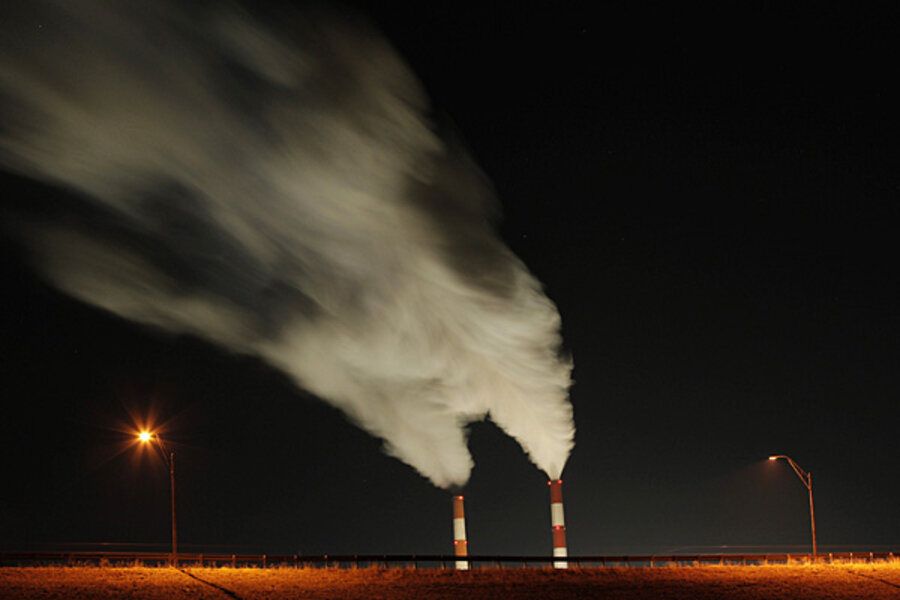New EPA rules: Coal's future depends on cheap carbon capture
Loading...
The Environmental Protection Agency unveiled new regulations Friday that limit the amount of carbon produced by new power plants in the United States.
The rules are most relevant for the coal industry, whose only hope for compliance rests on the fate of a promising, but expensive and early-stage technology: carbon capture and storage (CCS).
Finding a way to capture and store power plant carbon emissions underground on a commercial scale isn't exactly easy. But the real challenge comes not in technical innovation, but in finding market demand.
"The technology [is] not rocket science," said Howard Herzog, a senior research engineer who specializes in CCS technologies at the Massachusetts Institute of Technology's Energy Initiative in Cambridge, Mass. "A lot has been around for a long time and used in other fields. It works; it’s just a matter of setting up the right incentives to bring it into the marketplace."
Backers of the new regulation say it will accomplish just that. Limits on carbon emissions will spur industry to develop carbon capture technology, ultimately making coal competitive with natural gas, wind, and solar in a future, low-carbon economy. But the coal industry accuses the Obama administration of waging a "war on coal," stifling innovation of the very clean-coal technologies it aims to promote.
"Ironically, the EPA’s proposal could actually do long-term harm to the environment," Robert Duncan, chief executive of the American Coalition for Clean Coal Electricity, said in a statement Thursday. "By stopping the development of new coal plants, the EPA is halting the development of carbon capture and storage (CCS) technologies. This misguided policy only adds insult to injury to an industry which has successfully used clean coal technologies to reduce many emissions by more than 90 percent."
In its simplest form, CCS siphons off heat-trapping carbon-dioxide (CO2) emissions at some point in the coal-firing process. The emissions are then stored deep underground where they cannot escape into the atmosphere. In some cases, the trapped carbon dioxide is pumped into depleted oil reservoirs to coax hard-to-reach oil from stubborn rock formations.
The technology is expensive and energy-intensive. Power companies view it as a "parasitic load" that can eat away as much as 30 percent of their total power generation. That's why repurposing the CO2 for oil extraction purposes is an attractive option. Companies can offset some of what they lose with revenue gained by selling CO2 for use in so-called "enhanced oil recovery."
Despite the promise, no commercial-scale US power plants currently use CCS. The technology has been used in industrial plants for some time and two CCS coal plants are expected to come online in 2014, but future projections look grim. Cheap, plentiful natural gas threatens to render coal obsolete, with or without new regulations or new technologies. Without a market for coal, the reasoning goes, there's no market for carbon capture and storage technology.
"It’s always going to be cheaper to put the CO2 in the atmosphere than to store it," Mr. Herzog said in a telephone interview. "Unfortunately, the regulations that have been posed do not create markets, they do not create incentives. They have a gaping loophole. That gaping loophole is natural gas."
Others are more optimistic. Natural gas prices could rebound. Innovation could drive the cost of CCS down. Both those factors could make coal competitive again and eliminate the new rules' "loophole." And even if the technology doesn't work out for coal, some look at the broader application of CCS in the power mix, both at home and abroad.
The rules motivate natural gas companies to begin innovating in CCS, in anticipation of future rules, according to John Thompson, director of the Fossil Transition Project at Clean Air Task Force, a nonprofit headquartered in Boston. It also sends a signal to China, Mr. Thompson said, setting the example for the coal-heavy powerhouse to incorporate CCS.
"These rules are not the end of coal; these rules are the beginning of CCS," Mr. Thompson said in a phone interview. "CCS started in industrial settings and is migrating into power sectors. These rules will help drive that. Eventually, we’ll have to have CCS on both power and industrial [sectors] if we have any hope of ever stopping climate change."






